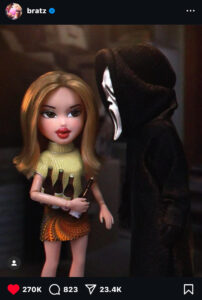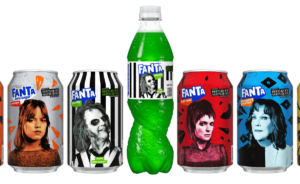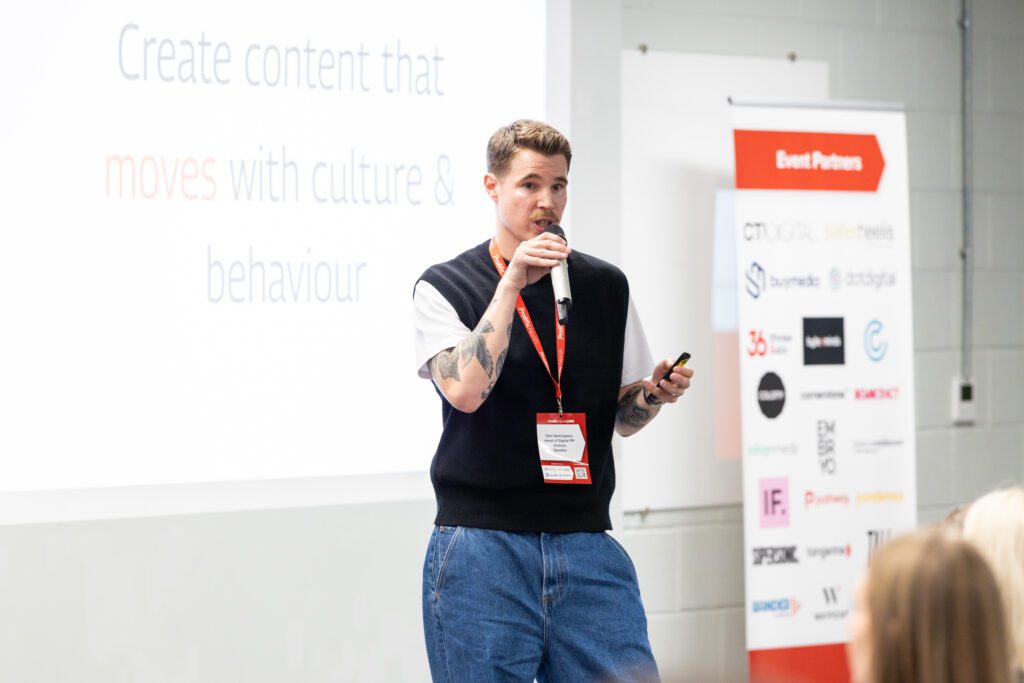
5 takeaways from high-performing Halloween campaigns

It’s no secret that Halloween is an opportunity to get creative with your marketing campaigns, with many iconic adverts being splattered over our screens over the years. The holiday has become much more than Dracula costumes and scary movies, with industries such as homeware and beauty igniting their creative spark for the spooky season.
There’s a good reason for it too, as it is estimated that UK consumer spending for Halloween products has quadrupled since 2013, making it a chance for to not only show off your creative flair but also capitalise on consumer demand by switching up your marketing campaigns to fit within the ‘treat or treat’ agenda.
Here are my 5 ‘treats’ to take away from marketing campaigns this spooky season.
1. Resonate with your audience
A strong contender for the best (in my opinion) Halloween campaign that appeals to a brand’s core audience is Bratz’s social media campaign collaborating with Mean Girls and Ghost Face.
By referencing these two films they not only resonate with their audience and fit within the spooky aesthetic but also encourage shares of the posts across Instagram stories, increasing the natural reach of your campaign and presenting your brand in front of new audiences.
In fact, on average Bratz’s Instagram post receives around 1,500 shares whereas the Mean Girls and Ghost Face received an average of 18,000, with the most at 60,000.

Have a think about what your audience wants to see, what do you think will spark them to press ‘share to story’?
2. Summon brand partnerships
Brand collaborations are another biggie if you want to reach new audiences and tap into each other’s customer bases. This year, M&M (who always smash it during spooky season) partnered with a surprising suspect: Ring, Amazon’s video doorbell.
The partnership evoked the playfulness of the spooky holiday, starting with the iconic Ring doorbell chime as Red ‘turns the tables’ on trick-or-treaters, encouraging customers to use the ‘M&M quick replies’ feature that has been added to the video doorbell for the Halloween season and capture visitor reactions to share across social media platforms. By collaborating with another brand you can leverage your partner’s followers, increase brand awareness, and enhance credibility.
Sophia Padt, M&M’s senior brand manager has done an excellent job on the campaign, saying the following about the collaboration:
“We’re thrilled to partner with Ring to celebrate the playful spirit of Halloween. By adding that fun M&M’S touch to Ring video doorbells, we hope to encourage more people to get involved with trick-or-treating traditions whilst creating some entertaining memories along the way,”.
3. Nod towards pop culture
Including pop culture references in your campaign reflects a familiar story or trend for consumers to relate to, therefore resonating with your audience. By connecting with the consumer in this way, you can increase engagement and trust, resulting in better campaign performance.
When looking into this year’s eerie marketing, a common theme amongst the spooky campaigns has been tapping into pop culture. For example, Heinz worked with the creative agency Gut New York to turn smeared ketchup into creepy Joker-style grins and the timing of the campaign was no accident, lining up with the upcoming haunted holiday and the release of the latest Joker film. I could continue to say a lot more about the latest advert from the condiment giant as ‘Heinz Smiles’ has varied connotations alongside pop culture, however, this campaign is a great example of subtle but effective inclusion of pop culture.
Fanta also summoned pop culture references for their creepy campaign this year, dedicating a new limited edition flavour ‘Haunted Apple’ to the iconic character, Beetle Juice, in celebration of the new film. This shouldn’t be surprising to some, given the brand’s long history of innovation during the Halloween season, as they continue to strive to connect with younger audiences. In past years, we have seen the brand launch spooky packaging and limited edition flavours and this year is no different, however for 2024 they have an unmissable reference to pop culture. Alongside the ‘Haunted Apple’ flavor, Fanta packaging was possessed by Beetle Juice Beetle Juice characters, with the limited edition can adhering to the traditional black and white colours of the iconic supernatural character. By partnering with the iconic sequel, Fanta has expanded their reach to a new audience and built trust within their brand, aiming to increase brand awareness and consumer engagement.

4. Tell us a (scary) story
By telling your audience an engaging story, you can resonate with them through a tailored message that reflects your brand. When creating a story-focused campaign, you must know your target audience/who you’re aiming to reach, so you can ensure the story is relatable for that particular narrative and evoke emotions that connect with your brand.
A fine example of this is WeRoad, who have done just that this year with their ‘Holiday Reaper’ campaign. The group travel company painted a gore-filled picture to burnt-out employees that highlighted the importance of taking all your annual leave allowance before the Holiday Reaper (a.k.a HR) can take it all into the over-worked abyss.
The short story puts the group travel brand in the spotlight of the perfect office escape which is especially relevant in 2024 considering the latest statistics that 61% of workers didn’t take their full annual leave allowance in 2023.
5. Let’s get playful
Marketing can be very serious and sometimes boring as a result, but by ditching the same-old strategy that we’ve seen overly done and amping up your funny side you can connect with your target audience by showing some real character behind your brand. A fine example of adding a playful touch to amplify your campaign and stand out amongst the crowd is by cosmetic company Elf, and their ‘Divine Skintervention’ ad.
I love to see beauty brands involving themselves in the spookfest and Elf has particularly shone this year by shedding light on ‘sinful’ skincare choices such as using an expired moisturiser, or an unsuitable face was such as a bar of soap. These ‘sinful’ skincare choices aren’t just coming from their ‘Sinfluencer’ Meg Stalter who is featured in the campaign either, as these skin care mistakes have been trending across TikTok for the past few years.
With this campaign, the growing cosmetic company aligned themselves with Gen Z, their beauty bags, and the sinful mistakes their audience has likely made over the years.

Final thoughts
Don’t be afraid to delve deep into the spooky season! Yes, it’s still important to reflect your brand and core message, however, the holiday allows you to also get your thinking hat on and wave your creative wand outside the box.
Fancy talking to us some more?




